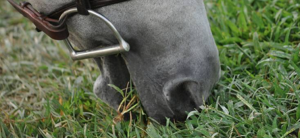 Forage for Endurance Horses: Forage is perhaps the single most important ingredient in an endurance horse’s diet. It a major source of energy and essential nutrients. It is also the presence of fiber in the digestive tract provides bulk to keep the tract functioning properly, keeps blood flowing to the tract even during exercise, stimulates thirst, and holds water and electrolytes in a reservoir.
Forage for Endurance Horses: Forage is perhaps the single most important ingredient in an endurance horse’s diet. It a major source of energy and essential nutrients. It is also the presence of fiber in the digestive tract provides bulk to keep the tract functioning properly, keeps blood flowing to the tract even during exercise, stimulates thirst, and holds water and electrolytes in a reservoir.
Without the marvelous milieu of innumerable microbes populating the cecum and colon of the horse, forage would be indigestible. These microbes are not only responsible for breaking down the fiber in the forage but the end products of their fiber digestion are VFAs. They are sources of energy for the horse.
Energy:
The reason why the endurance horse is able to keep going for hours upon end has to do with the ability of these microbes to keep making VFAs. They’re absorbed. Next, it’s distributed either to the liver (for conversion to glucose) or directly to the muscle cells to be used for aerobic energy formation. This, combined with the breaking down of glycogen stores in the muscle cells and the triglycerides from muscle and adipose tissue, makes for steady energy generation in the endurance horse.
This type of energy generation is efficient for aerobic metabolism. It is not sufficient to fuel a horse that is going at high speeds in an anaerobic state for very long. Adequate forage intake and a healthy microbial population are essential for proper fiber digestion. As well as fuel production, and the successful performance of the endurance horse.
Most of the endurance horses in the United States have the advantage of 24-hour turnout on pasture. Even when forage is sparse, it has several advantages for the horse. First, free-choice access to nibble all day long is healthiest for horses. It is what their digestive tracts were designed to do. Greatly reducing the risk of nutritional disorders like colic and ulcers.
Second, the ability to move about freely is better for the joints. Particularly if horses are starting to get arthritic, and for the muscle tissue, reducing risk of muscle cramping or tying-up.
Third, grazing with the head down to the ground, milling around looking for tasty morsels, is relaxing to a horse. It’stherapeutic and soothing. Green grass is more nutritious than hay because some nutrients are lost during the drying and storing of hay. Fresh grass is higher in the fat-soluble vitamins like vitamin A (as carotenes) and vitamin E; has more sugars and digestible fiber; and because of its high water content, aids in keeping the horse hydrated.
Grass Quality:
Most of the pastures in the United States produce quality grass. It is more difficult in tropical countries where the grasses contain antifactors that jeopardize quality (such as oxalates, bitter taste, mycotoxins, etc.). For those horses, getting fresh grass may mean it comes in the form of green chop fed to them in a stall or small paddock.
In temperate regions of Australia, much of the pasture base contains tropical species. Including kikuyu, which can contain high levels of oxalates. Impacting on calcium absorption in the horse and often a supplement is required to avoid a deficiency of calcium in the diet. Alfalfa (lucerne) is a great source of calcium. Often used to counteract the effects of high oxalate pastures in these areas.
In many parts of the world, keeping an endurance horse out on pasture is not an option. In those cases, forage will primarily be in the form of hay. For others, hay may be fed in addition to the pasture, especially in dry or winter seasons. There have been lengthy discussions on the right type of hay to feed an endurance horse, but what it all boils down to is getting the best hay that is accessible. This will vary between regions and from country to country. In general, daily use of legume hays like alfalfa (lucerne), clover, peanut, and pea is less desirable than grass hays. Because of their high protein and calcium content.
Grass Types:
However, legume hays are very desirable. Especially on the day of the race for the same reasons as well as for their palatability. In the United States, grass hay seems to be the hay most commonly fed to endurance horses. A small percentage of riders feed some alfalfa. Feeding only legume hay to an endurance horse increases the risk of having metabolic problems. For example, thumps during a race because of the effect of chronic high calcium intake on parathyroid hormone mobilization. Feeding alfalfa, especially in California, increases the risk of developing enteroliths, stones that form in the intestinal tract.
Some endurance riders have no choice of what to feed because of the lack of availability of grass forages. They live with the risk. Many riders in traditionally alfalfa areas are paying significantly higher prices than those in grass-growing regions just to be able to get grass hay for their horses. Feeding mostly grass hay with some legume is still a very reasonable diet for an endurance horse. Especially if the horse has no access to pasture. By feeding less legume hay, owners remove the risk of high-calcium complications because the total amount of calcium ends up significantly less.
Common Practices:
A common practice around the world is to include some type of chaff in the horse’s daily diet. Chaff is forage. Usually, cut into fine (1-3 cm) pieces. Made from alfalfa, grass hay, or straw. Chaff commonly has a bit of molasses and/or oil sprayed on it to increase palatability and decrease dustiness. Chaff can also be fed at vet checks as an easy-to-chew source of fiber.
It is common to mix the concentrate meal with some type of chaff. This serves two purposes: to get more fiber into the horse and to slow down the intake of the meal, which in turn will moderate the glycemic response. When chaff is not available, hay pellets (alfalfa or grass) serve the same purpose. Mixing with the grain or concentrate can improve intake. As well as slow grain consumption, and reduce the risk of choking on the hay pellets. Hay pellets can be fed whole. Also, softened in water and mixed with beet pulp or wheat bran.
The feed industry has contributed a couple of food byproducts that have become fibrous staples in the endurance horse’s diet. The most common of these are beet pulp and soy hulls. Sometimes called “super fibers.” They are higher in digestible fiber than hay and can supply a significant amount of calories by microbial fermentation. Soaked beet pulp is commonly fed alone or mixed with the concentrate portion of the diet. Beet pulp is also used in commercial horse feeds. In order to increase the fiber content. Soy hulls are usually found in high-fiber commercial horse feeds. They’re rarely used as a standalone ingredient in the diet.
Super fibers are very useful in getting more fiber into the diet when hay and/or grass is not adequate or giving the digestive tract a different type of fiber that may be broken down at a different speed than forage fibers. A combination of fiber types is important in developing a healthy microbial population that can contribute significantly to consistent energy generation.
J & J Hay can help to answer more hay related questions.
Article source: Kentucky Equine Research
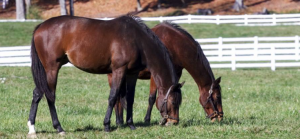 Monitor Autumn Grazing to Prevent Laminitis in Horses: Horses are at increased risk for laminitis when grass begins to grow in the spring, providing abundant forage that is high in moisture and carbohydrates but low in fiber. Autumn is also a high-risk time for grazing horses for a somewhat different reason.
Monitor Autumn Grazing to Prevent Laminitis in Horses: Horses are at increased risk for laminitis when grass begins to grow in the spring, providing abundant forage that is high in moisture and carbohydrates but low in fiber. Autumn is also a high-risk time for grazing horses for a somewhat different reason.
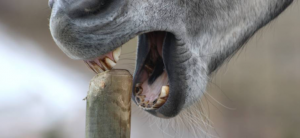 Stereotypic behaviors such as weaving, cribbing, and stall-walking occur commonly in high-performance horses as well as many companion horses. In addition to being unsightly, potentially damaging to the barn, and raising welfare concerns, stereotypic behaviors also result in important health issues. For example, dental disorders, temporohyoid joint damage, poor performance, weight loss, and colic.
Stereotypic behaviors such as weaving, cribbing, and stall-walking occur commonly in high-performance horses as well as many companion horses. In addition to being unsightly, potentially damaging to the barn, and raising welfare concerns, stereotypic behaviors also result in important health issues. For example, dental disorders, temporohyoid joint damage, poor performance, weight loss, and colic.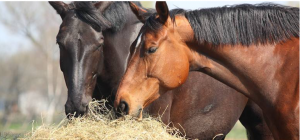 Preserving Horse Health in the Face of Low-Quality Forage: Horse owners often don’t have control over the hay given to their horses. Because of this, they regularly offer a concentrate or ration balancer. This provides the requisite nutrients low or missing in the forage. However, well-formulated products can fill this dietary void. Yet, researchers wondered if additional fortification would increase digestion and bolster muscle accretion over the topline.
Preserving Horse Health in the Face of Low-Quality Forage: Horse owners often don’t have control over the hay given to their horses. Because of this, they regularly offer a concentrate or ration balancer. This provides the requisite nutrients low or missing in the forage. However, well-formulated products can fill this dietary void. Yet, researchers wondered if additional fortification would increase digestion and bolster muscle accretion over the topline. Forage for Endurance Horses: Forage is perhaps the single most important ingredient in an endurance horse’s diet. It a major source of energy and essential nutrients. It is also the presence of fiber in the digestive tract provides bulk to keep the tract functioning properly, keeps blood flowing to the tract even during exercise, stimulates thirst, and holds water and electrolytes in a reservoir.
Forage for Endurance Horses: Forage is perhaps the single most important ingredient in an endurance horse’s diet. It a major source of energy and essential nutrients. It is also the presence of fiber in the digestive tract provides bulk to keep the tract functioning properly, keeps blood flowing to the tract even during exercise, stimulates thirst, and holds water and electrolytes in a reservoir.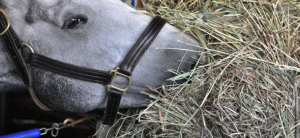 Nutrients in Horse Forage: Questions Answered: Owners must rely on preserved forage for feeding horses during certain times of the year. When stored, hay loses some of its nutrient content, leaving horses in need of both energy and nutritional supplements.
Nutrients in Horse Forage: Questions Answered: Owners must rely on preserved forage for feeding horses during certain times of the year. When stored, hay loses some of its nutrient content, leaving horses in need of both energy and nutritional supplements.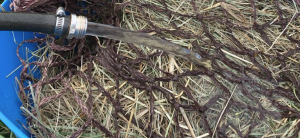 Soaking horse hay safely should be as easy as washing your hair, right? Lather, rinse, repeat. But, alas, no.
Soaking horse hay safely should be as easy as washing your hair, right? Lather, rinse, repeat. But, alas, no.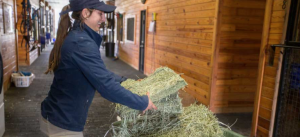 Don’t flake out: feed horse hay by weight, not by flake! Whoever invented modern hay-baling equipment garners far too little praise from horse owners. In other words, the concept of dividing unwieldy bales into flakes, or biscuits, qualifies as sheer genius.
Don’t flake out: feed horse hay by weight, not by flake! Whoever invented modern hay-baling equipment garners far too little praise from horse owners. In other words, the concept of dividing unwieldy bales into flakes, or biscuits, qualifies as sheer genius.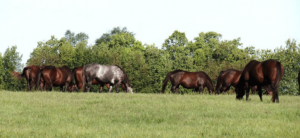 Milkweed toxicity in horses is something horse owners need to be aware of. Monarch butterflies require milkweed to complete their life cycle. However, how are horses best served? By ignoring the ubiquitous plant. Several species of milkweed, a well-known perennial plant, cause poisoning in horses and other livestock, usually when more palatable plants are not available.
Milkweed toxicity in horses is something horse owners need to be aware of. Monarch butterflies require milkweed to complete their life cycle. However, how are horses best served? By ignoring the ubiquitous plant. Several species of milkweed, a well-known perennial plant, cause poisoning in horses and other livestock, usually when more palatable plants are not available.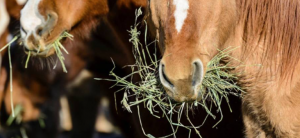 Beware of beetles in Alfalfa Hay for horses! Most horse owners make a visual scan of the hay they feed their horses. Always be on the lookout for mold, wafting dust, unusual plants, and even unidentifiable debris. If feeding alfalfa (lucerne), horse owners should be aware of another potential danger: blister beetles.
Beware of beetles in Alfalfa Hay for horses! Most horse owners make a visual scan of the hay they feed their horses. Always be on the lookout for mold, wafting dust, unusual plants, and even unidentifiable debris. If feeding alfalfa (lucerne), horse owners should be aware of another potential danger: blister beetles.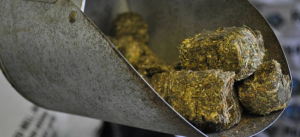 The five most common forage forms are pasture, hay, cubes, pellets, and haylage. Although, long gone are the days of wide-open pastureland for domesticated horses and ponies. Forage remains the primary constituent of most well-balanced equine diets, but nowadays it can be proffered in a multitude of forms, from traditional long-stemmed hay to symmetrical cubes.
The five most common forage forms are pasture, hay, cubes, pellets, and haylage. Although, long gone are the days of wide-open pastureland for domesticated horses and ponies. Forage remains the primary constituent of most well-balanced equine diets, but nowadays it can be proffered in a multitude of forms, from traditional long-stemmed hay to symmetrical cubes.